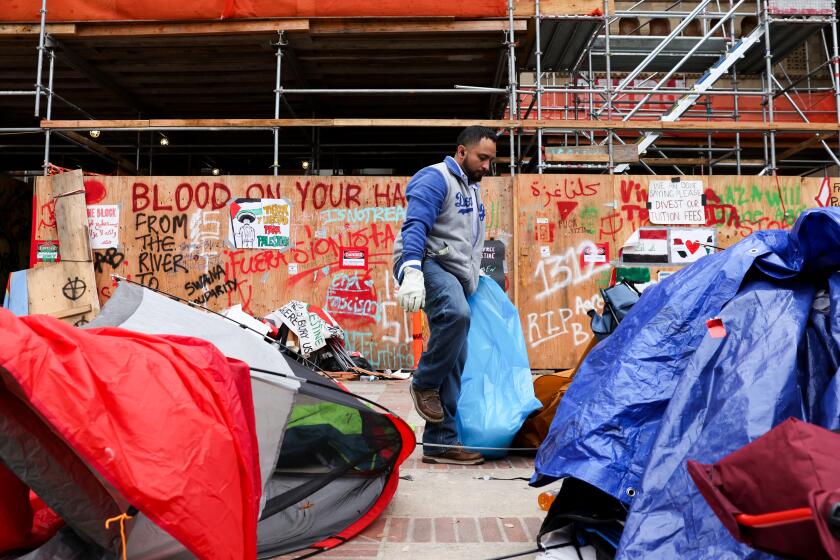A shot at swine flu
Given the demographics and highly contagious nature of swine flu, it would be natural to think that when the county Department of Public Health begins vaccinations Friday, its efforts would be concentrated in the public schools, likely to be the most common incubators of the disease and a daily gathering spot for the most vulnerable population. Instead, the clinics will be held just about anywhere but schools: at community centers, parks and the like.
These are traditional and valid locations for vaccination efforts. They’re just not the ideal places for protecting the public against this particular flu. New York City is offering free swine flu vaccinations at all of its elementary schools, public and private. In November, Berkeley will hold free vaccination clinics at every public school. San Francisco is setting up its inoculation clinics close to the schools.
Swine flu is no more lethal, generally speaking, than the average seasonal flu. Yet its dangers should not be underestimated. Because the H1N1 virus spreads with extreme ease, even if the percentage of patients who die or suffer serious complications is the same as with the usual flu, the number of deaths will be higher.
Swine flu also seems to strike hardest at a different group of people: children and young adults ages 5 to 24. Seasonal flu is especially dangerous to people 65 and older, but senior citizens appear to have some level of immunity to swine flu. Experts at the Centers for Disease Control suspect this group might have gained partial resistance by being exposed to previous, though different, swine flu epidemics.
There’s extra reason to worry when school-age children are vulnerable. Older adults tend to spend less time in crowded group situations in which there is a high risk of spreading the disease. School-age children sit close together for several hours a day, five days a week, swapping food, swiping at runny noses and touching the same computer keyboards and playthings. In addition, children appear to be carriers of the flu for days after their symptoms disappear. In the last seven months, 86 children and adolescents in the U.S. have died after falling ill with swine flu.
The county’s elementary schools are probably the most accessible place within a neighborhood for families to gather, and they are certainly the best place to ensure that school-age children will receive their inoculations. Leaders of the nearly 700,000-student Los Angeles Unified School District have been talking for years about coordinating efforts with public agencies to make schools not just centers of education but centers of community life. Yet neither the district nor the county followed through on this round of inoculations, and an opportunity was missed. But with vaccine production behind expectations, new supplies will be rolling in over time. There will be chances to get it right.
More to Read
Start your day right
Sign up for Essential California for news, features and recommendations from the L.A. Times and beyond in your inbox six days a week.
You may occasionally receive promotional content from the Los Angeles Times.






